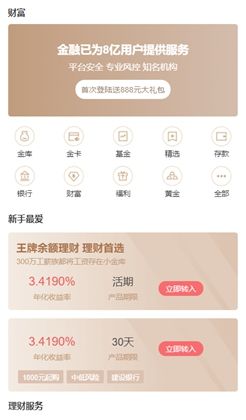Java怎么使用NIO优化IO实现文件上传下载功能
1 NIO的一些基础预备知识
Java中IO流类的体系中BIO与NIO:https://blog.csdn.net/ZGL_cyy/article/details/104326458
Java IO体系与NIO和BIO体系面试题 :https://blog.csdn.net/ZGL_cyy/article/details/122836368
为什么使用NIO:因为传统IO文件传输速率低,所以选择了NIO进行文件的下载操作。NIO还有一个好处就是其中零拷贝可以实现减少内存中数据的重复,减少CPU操作的效果。所以相对于传统IO,NIO有着效率高点的优势。
2 NIO为何较传统的io速度较快
就拿单个io过程来看,首先时间主要花在了用户态和内核态的转换上,其次,考虑将多个io的“合并”为一个io,这不就节省时间了吗
相应的NIO主要做了两方面的提升
1、避免了用户态和内核态的交换,直接操作内存,用户态和内核态的转换是很费时的,传统的io写入磁盘时,用户态的接口不能直接操作内存,而是通过操作系统调用内核态接口来进行io。
2、利用buffer减少io的次数,buffer化零为整”的写入方式因为大大减小了寻址/写入次数,所以就降低了硬盘的负荷。
3、IO 是基于流来读取的,而NIO则是基于块读取,面向流 的 I/O 系统一次一个字节地处理数据。一个输入流产生一个字节的数据,一个输出流消费一个字节的数据。为流式数据创建过滤器非常容易。链接几个过滤器,以便每个过滤器只负责单个复杂处理机制的一部分,这样也是相对简单的。不利的一面是,面向流的 I/O 通常相当慢。
一个 面向块 的 I/O 系统以块的形式处理数据。每一个操作都在一步中产生或者消费一个数据块。按块处理数据比按(流式的)字节处理数据要快得多。但是面向块的 I/O 缺少一些面向流的 I/O 所具有的优雅性和简单性。
4、非阻塞IO 和 异步IO的支持, 减少线程占有的栈空间,以及上下文切换
5、IO 多路复用的支持
6、Buffer 支持,所有读写操作都是基于 缓冲 来实现
7、NIO 支持 Direct Memory, 可以减少一次数据拷贝
8、Netty 零拷贝的支持
3 NIO实战上传下载
3.1 url下载文件
java NIO包提供了无缓冲情况下在两个通道之间直接传输字节的可能。
为了读来自URL的文件,需从URL流创建ReadableByteChannel :
ReadableByteChannel readableByteChannel = Channels.newChannel(url.openStream());
从ReadableByteChannel 读取字节将被传输至FileChannel:
FileOutputStream fileOutputStream = new FileOutputStream(FILE_NAME); FileChannel fileChannel = fileOutputStream.getChannel();
然后使用transferFrom方法,从ReadableByteChannel 类下载来自URL的字节传输到FileChannel:
fileOutputStream.getChannel().transferFrom(readableByteChannel, 0, Long.MAX_VALUE);
transferTo() 和 transferFrom() 方法比简单使用缓存从流中读更有效。依据不同的底层操作系统,数据可以直接从文件系统缓存传输到我们的文件,而不必将任何字节复制到应用程序内存中。
在Linux和UNIX系统上,这些方法使用零拷贝技术,减少了内核模式和用户模式之间的上下文切换次数。
工具类:
/**NIO文件下载工具类
* @author olalu
*/
public class NioDownloadUtils {
/**
* @description:
* @param file: 要下在文件
* @return: void
*/
public static void downloadDoc(File file,HttpServletResponse response) throws IOException {
OutputStream outputStream = response.getOutputStream();
String contentType = Files.probeContentType(Paths.get(file.getAbsolutePath()));
//设置响应头
response.setHeader("Content-Type", contentType);
response.setHeader("Content-Disposition", "attachment;filename="+ new String(file.getName().getBytes("utf-8"),"ISO8859-1"));
response.setContentLength((int) file.length());
//获取文件输入流
FileInputStream fileInputStream = new FileInputStream(file);
//获取输出流通道
WritableByteChannel writableByteChannel = Channels.newChannel(outputStream);
FileChannel fileChannel = fileInputStream.getChannel();
//采用零拷贝的方式实现文件的下载
fileChannel.transferTo(0,fileChannel.size(),writableByteChannel);
//关闭对应的资源
fileChannel.close();
outputStream.flush();
writableByteChannel.close();
}
public static void downloadDoc(String path,HttpServletResponse response) throws IOException {
File file = new File(path);
if (!file.exists()){
throw new RuntimeException("文件不存在");
}
downloadDoc(file,response);
}
}3.2 通过NIO上传文件
/**
* 文件上传方法
*/
public static Result uploading(MultipartFile file) {
//获取文件名
String realName = file.getOriginalFilename();
String newName = null;
if(realName != null && realName != ""){
//获取文件后缀
String suffixName = realName.substring(realName.lastIndexOf("."));
//生成新名字
newName = UUID.randomUUID().toString().replaceAll("-", "")+suffixName;
}else {
return Result.fail("文件名不可为空");
}
//创建流
FileInputStream fis = null;
FileOutputStream fos = null;
//创建通道
FileChannel inChannel = null;
FileChannel outChannel = null;
try {
fis = (FileInputStream)file.getInputStream();
//开始上传
fos = new FileOutputStream(UPLOAD_URL+"\\"+newName);
//通道间传输
inChannel = fis.getChannel();
outChannel = fos.getChannel();
//上传
inChannel.transferTo(0,inChannel.size(),outChannel);
}catch (IOException e){
return Result.fail("文件上传路径错误");
}finally {
//关闭资源
try {
if (fis != null) {
fis.close();
}
if (fos != null) {
fos.close();
}
if (inChannel != null) {
inChannel.close();
}
if (outChannel != null) {
outChannel.close();
}
} catch (IOException e) {
e.printStackTrace();
}
}
return Result.ok(newName);
}本文网址:https://www.zztuku.com/index.php/detail-14190.html
站长图库 - Java怎么使用NIO优化IO实现文件上传下载功能
申明:本文转载于《CSDN》,如有侵犯,请 联系我们 删除。








您还没有登录,请 登录 后发表评论!
提示:请勿发布广告垃圾评论,否则封号处理!!